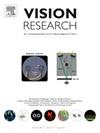Free-fusion stereograms are routinely used for demonstrating various stereoscopic effects. Yet, untrained observers find it challenging to perform this task. This study showed that only less than 1/3rd of sixty-one pre-presbyopic adults with normal binocular vision could successfully free-fuse random-dot image pairs and identify the stereoscopic shapes embedded in these patterns. Another one-third of participants performed the task with poor success rates, while the remaining could not perform the task. There was a clear dissociation of vergence and accommodative responses in participants who were successful with free-fusion, as recorded using a dynamic infrared eye tracker and photorefractor. Those in the unsuccessful cluster either showed strong vergence and accommodation or weak vergence and strong accommodation during the task. These response patterns, however, were specific to the free-fusion task because all these participants generated good convergence/accommodation to real-world targets and to conflicting vergence and accommodative demands stimulated with prisms or lenses. Task performance of the unsuccessful cluster also improved significantly following pharmacological paralysis of accommodation and reached the performance levels of the successful cluster. A minority of participants also appeared to progressively learn to dissociate one of the two directions of their vergence and accommodation crosslinks with repeated free-fusion trials. These results suggest that successful free-fusion might depend upon how well participants generate a combination of volitional and reflex vergence responses to large differences in disparity with conflicting static accommodative demands. Such responses would require that only one direction of the vergence-accommodation crosslinks be active at any given time. The sequence of near-responses could also be learnt through repeated trials to optimize task performance.


